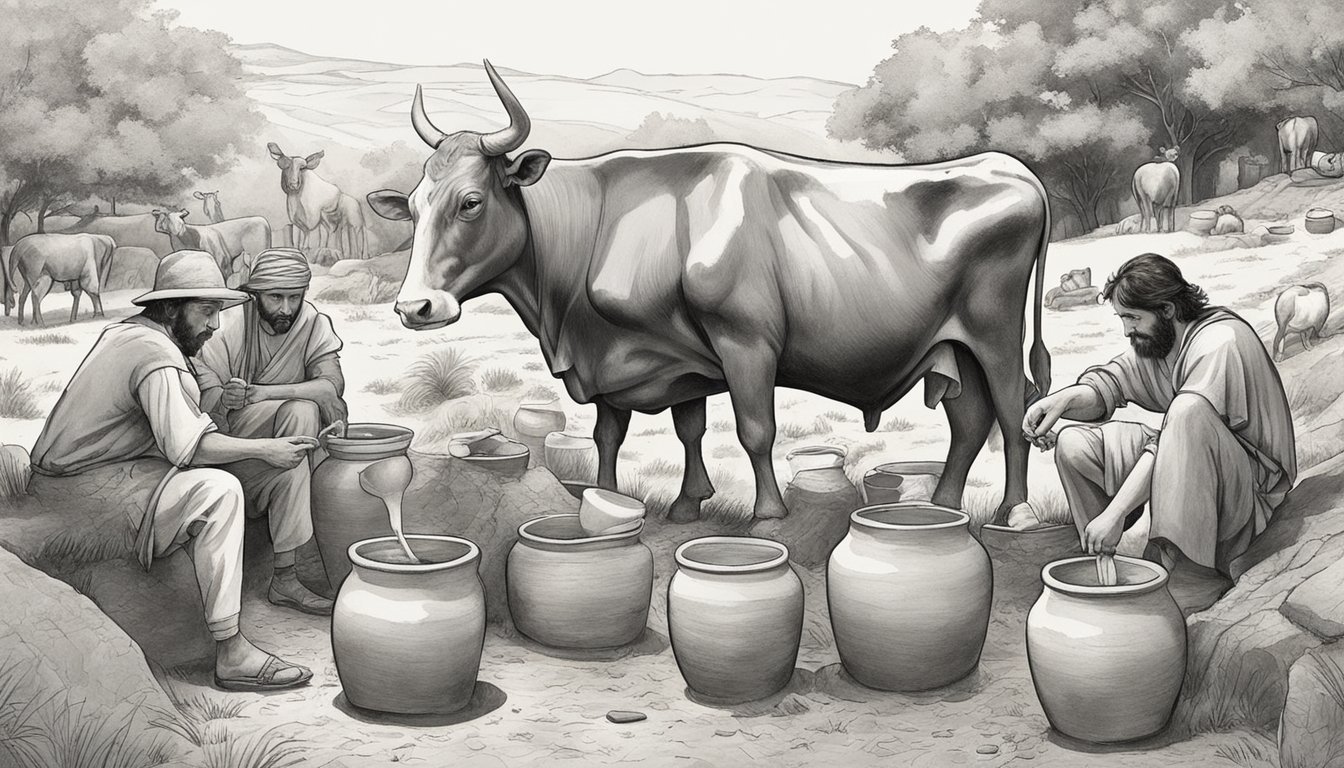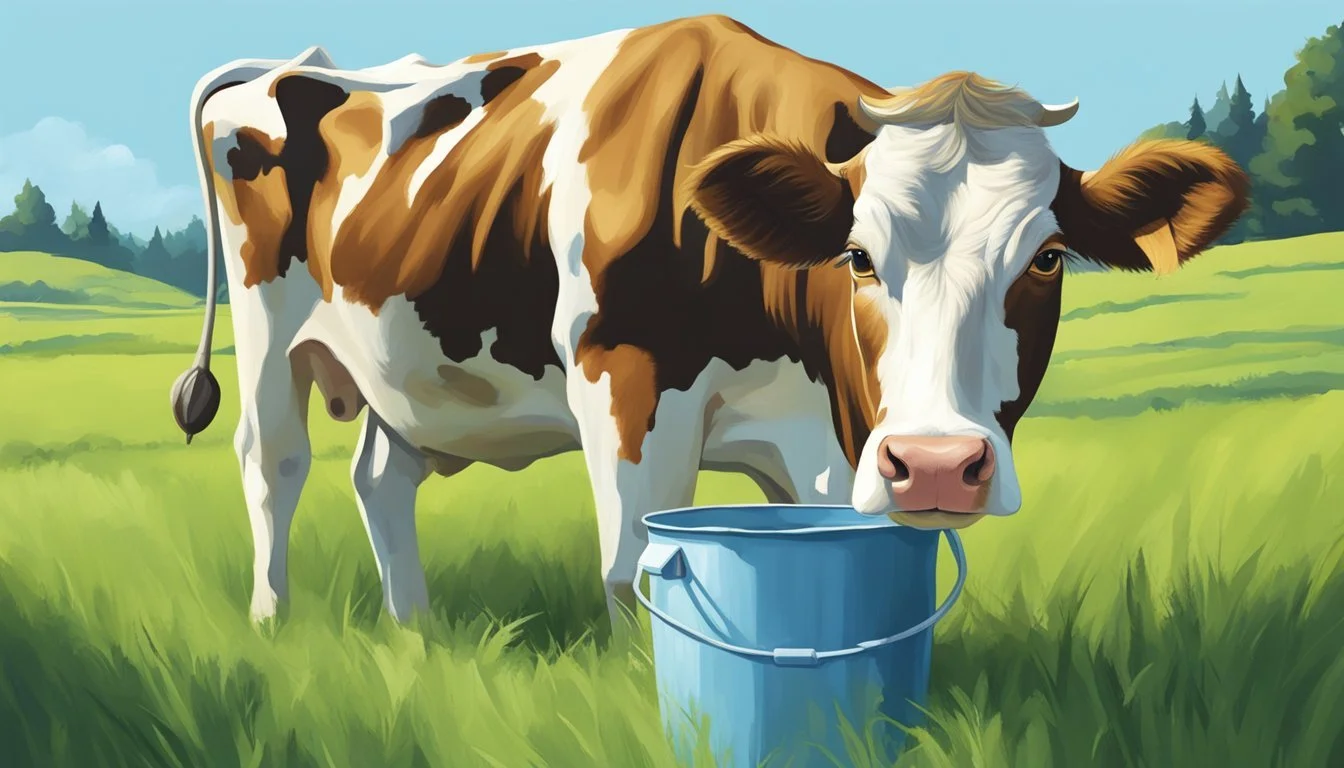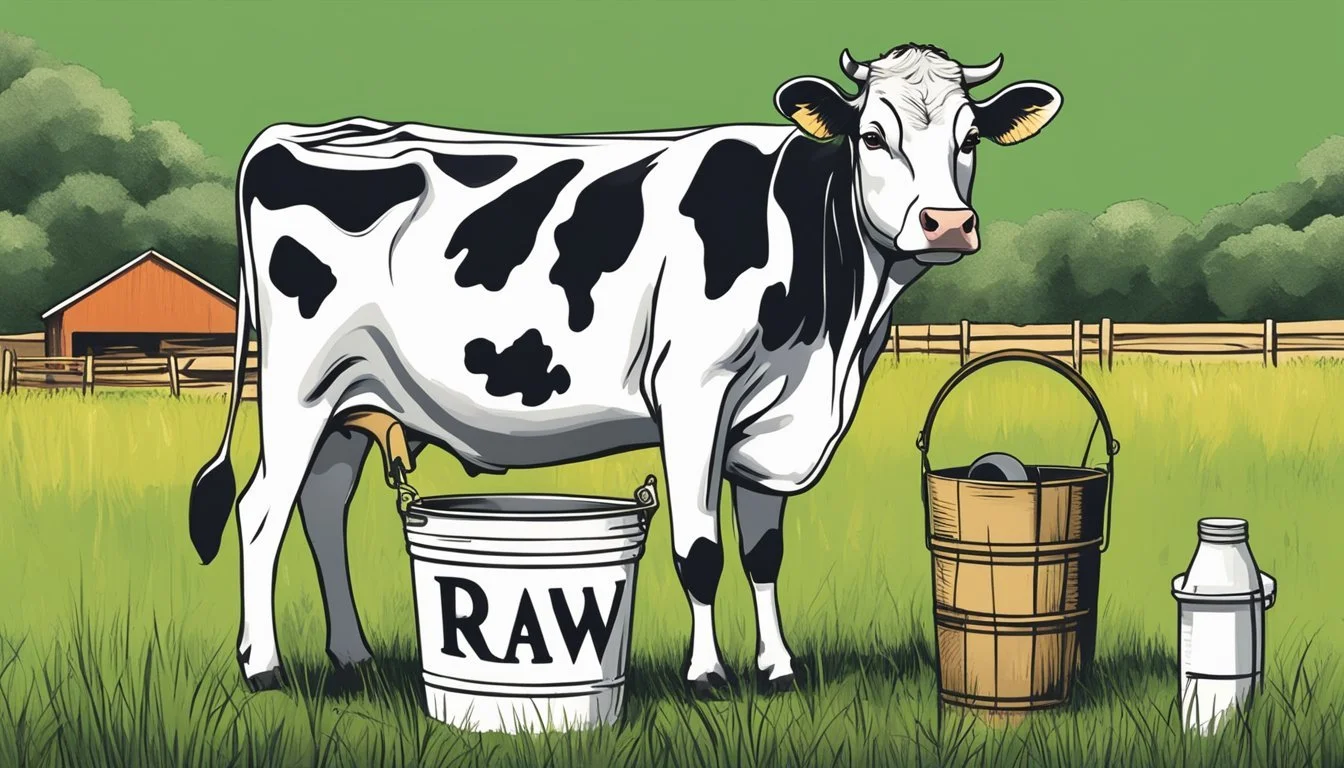The Role of Raw Milk in Paleo and Other Traditional Diets
The consumption of raw milk has become a subject of interest in various nutritional circles, including those who adhere to the Paleo diet, as well as those following other traditional diets. The Paleo diet, a regimen fashioned after the presumed eating habits of Paleolithic humans, emphasizes nutrient-dense whole foods such as meats, fish, vegetables, fruits, nuts, and seeds. Dairy, and particularly raw milk, is not typically included in the Paleo prescription as it is considered a Neolithic food introduced with the advent of agriculture.
However, some modern interpretations of the Paleo diet allow for the inclusion of raw milk, citing its nutritional benefits and arguing that grass-fed dairy can align with Paleo principles. Traditional diets, which are often based on the historical and cultural eating patterns of various populations, may include raw milk as a key component, recognizing its consumption among pastoral societies. These diets appreciate raw milk for its enzymes, vitamins, and minerals, some of which are known to be diminished through the pasteurization process.
Raw milk's role in these diets is up for debate, but it hinges on a few points: the historical absence of dairy in the Paleolithic era, the potential benefits and risks of raw milk consumption, and the evolution of human digestion and dairy tolerance. While some Paleo and traditional diet adherents include raw milk for its potential health benefits, others exclude it because of dietary purism or due to safety concerns regarding unpasteurized products.
Exploring The Role of Raw Milk in Paleo and Other lifestyles unveils a captivating narrative that transcends misconceptions about raw milk and celebrates its potential to enrich diverse dietary approaches. As an integral component of raw milk traditional diets, it offers a wholesome and natural source of nourishment that aligns with the principles of food sovereignty and sustainable consumption.
The inherent presence of raw milk probiotics further accentuates its value in supporting gut health and overall well-being, making it a favorable choice for those embracing the Paleo and similar dietary philosophies. Moreover, the evolving future of raw milk reflects a growing recognition of its nutritional benefits and cultural significance, paving the way for its continued integration into varied dietary lifestyles.
Embracing raw milk cure and its role in ancestral dietary practices showcases the enduring legacy of /raw-milk/raw-milk-tourism as a source of nourishment and vitality. By dispelling misconceptions and highlighting its positive attributes, the role of raw milk in diverse dietary approaches becomes a testament to its potential to foster holistic well-being and culinary diversity. This journey of discovery and appreciation underscores the timeless appeal of /raw-milk/raw-milk-tourism in complementing a range of dietary choices and sustaining a harmonious relationship with food and culture.
Historical Context of Raw Milk Consumption
Raw milk has played a pivotal role throughout human history, from the Paleolithic era to the development of agriculture and beyond. Its consumption has been a constant across various traditional diets, influenced by the domestication of dairy animals like cows.
Paleolithic Diet Origins
During the Paleolithic era, humans subsisted on a hunter-gatherer diet composed primarily of wild game, fish, fruits, vegetables, nuts, and seeds. Dairy was not a component of the diet at this time, as the domestication of animals had not yet occurred. Nutritional needs were met through foraging and hunting, and milk consumption would only have begun with the domestication of mammals later on.
Agricultural Advances and Dairy
The advent of agriculture marked a significant shift in human dietary practices. With the domestication of cows and other dairy animals, humans started consuming raw dairy, including milk. This transition allowed early societies not only to cultivate crops but also to maintain a stable source of nutrient-rich food from their livestock.
Domestication of Cows: Dates back to at least 10,000 years ago.
Raw Dairy Consumption: Introduced nutrient-dense sources to human diets.
Raw Milk in Traditional Diets
Following the initial domestication of dairy-providing animals, raw milk became integral to traditional diets across various cultures. Its role was not limited to nutrition; it also facilitated the development of biodiverse colonies of bacteria in the human gut, which were beneficial for health.
Nutrients: A source of vitamins and enzymes.
Biodiversity: Supported a healthy microbiome.
Each traditional diet that included raw milk would have been uniquely adapted to the available resources and environmental conditions, forming an important part of the local food culture and impacting the dietary patterns that evolved over time.
Raw Milk Composition and Health Benefits
Raw milk is touted for its nutritional complexity and health benefits, ranging from a rich nutrient profile to the presence of beneficial bacteria and enzymes. Understanding its components can shed light on why some individuals include raw milk in their diet.
Nutritional Profile
Raw milk is a source of several nutrients and proteins essential for human health. It naturally contains a balance of carbohydrates, proteins, and fats, including both saturated and unsaturated fatty acids. The proteins in raw milk are complete, meaning they provide all the essential amino acids necessary for the body.
Beneficial Bacteria and Enzymes in Raw Milk
One of the key characteristics of raw milk is its content of beneficial bacteria and enzymes that are typically destroyed during pasteurization. These components are believed to aid digestion and improve gut health. Probiotics, for example, contribute to a healthy gut microbiome and can strengthen the immune system.
Conjugated Linoleic Acid (CLA) and Omega-3s
Raw milk contains Conjugated Linoleic Acid (CLA) and omega-3 fatty acids, which are linked to a range of health benefits. CLA is a type of fat that may have anti-cancer, weight management, and immune-supportive properties. Moreover, the omega-3s in raw milk contribute to cardiovascular health and may reduce inflammation.
Vitamins and Minerals
The vitamin and mineral content in raw milk is significant. It is a rich source of calcium, which is crucial for bone health, and contains vitamins like vitamin K, known to play a role in blood coagulation and bone metabolism. Raw milk also supplies other minerals such as iron, magnesium, and potassium, which are vital for various bodily functions.
Role of Raw Milk in Paleo and Other Diets
This section examines the place of raw milk within the Paleo diet framework and contrasts its role with that of the Mediterranean and Standard American Diets, alongside discussing its potential benefits in weight management and gastrointestinal health.
Inclusion of Dairy in Paleo Diet
The Paleo diet emphasizes foods presumed to have been consumed by hunter-gatherers, excluding grains, legumes, and dairy, due to their late introduction in human history. Yet, some proponents consider grass-fed raw milk a permissible inclusion due to its nutritional profile and lower processing level compared to conventional dairy products.
Comparison with Mediterranean and Standard American Diets
Contrasting Paleo, the Mediterranean diet includes dairy and is rich in legumes, grains, and fats from olive oil and fish. The Standard American Diet is characterized by high carbohydrates and processed foods, including pasteurized dairy. Raw milk's role in Paleo is niche, whereas the other diets treat dairy more conventionally.
Potential for Weight Management
Supporters of raw milk in diet programs attribute its fuller fat content and probiotic properties to potential weight management benefits, suggesting it could aid in feeling satiated longer compared to low-fat dairy options. However, empirical evidence for raw milk's supremacy in weight loss is variable and necessitates more rigorous studies.
Raw Milk and Gastrointestinal Health
Raw milk is purported by some to carry gastrointestinal benefits due to its probiotic qualities and natural enzymes, which some argue may aid in digestion. Critics, however, point to the risks of lactose intolerance and potential for host pathogens. Individuals' responses to raw milk can widely vary, thereby informing its divided acceptance.
Scientific Research on Raw Milk
Scientific research on raw milk has aimed to uncover its potential impacts on human health, with studies exploring areas such as disease resistance and health implications. The available literature draws connections between raw milk consumption and effects on certain health conditions, while also addressing safety concerns related to foodborne illnesses.
Studies on Health Impact
Researchers have investigated how consuming raw milk might affect various health outcomes. Some studies suggest that certain populations consuming raw milk exhibit a lower incidence of allergies and asthma. For instance, the consumption of raw milk has been associated with a reduction in asthma, allergies, and atopic eczema due to the presence of beneficial bacteria and enzymes that are otherwise reduced or eliminated during pasteurization.
In the context of chronic diseases like diabetes, obesity, heart disease, and hypertension (high blood pressure), evidence remains more inconclusive. A few small-scale studies point to a potential link between raw milk and improved health markers, including lower levels of inflammation and reduced risk factors for cardiovascular disease. However, no decisive evidence has established raw milk as a preventative or treatment for these conditions.
Raw Milk and Disease Resistance
Disease resistance is another area of scientific focus. The theory proposed by some researchers is that raw milk, particularly when introduced early in life, might contribute to a stronger immune system, possibly through exposure to diverse microbiota. This aligns with the hygiene hypothesis, which argues that some exposure to microorganisms in early life supports the development of the immune system.
This research has been complicated by the need to balance potential benefits with the known risks of consuming raw milk, which include exposure to foodborne pathogens. High-quality hygiene practices among raw milk producers can mitigate some risks, but do not eliminate them. Consequently, public health agencies typically recommend against the consumption of raw milk due to concerns over pathogens that can cause serious illness.
The studies addressing raw milk and disease resistance have nuances; they speak to observed correlations rather than proven causations. More extensive research is needed to confirm these correlations and to further explore the exact mechanisms through which raw milk might impact disease resistance.
Potential Risks and Controversies
The inclusion of raw milk in paleo and other traditional diets sparks substantial debate due to its potential health risks and the controversy around pasteurization processes. These discussions often highlight the balance between preserving nutritional value and ensuring safety from pathogenic bacteria.
Debate over Pasteurization
Pasteurization is a milk processing technique that heats milk to a specific temperature for a set period to kill harmful bacteria. Proponents argue it’s essential for safety, as it eradicates pathogens such as Salmonella, E. coli, and Listeria. However, opponents of pasteurization claim that it diminishes the nutritional value of milk and eliminates beneficial bacteria, leading to a preference for raw, unpasteurized milk within some dietary circles.
Public Health Concerns
Public health entities like the FDA emphasize the risks of consuming raw milk. The main concerns arise from the potential presence of dangerous bacteria that can cause foodborne illnesses. Despite these objections, some individuals advocate for the consumption of raw milk, often citing its organic nature and opposition to processed foods. They argue that raw milk fits within the paleo diet's philosophy, which implies that traditional, non-processed foods are healthiest.
Balancing Nutritional Value and Safety
A critical aspect of the raw milk debate is the balance between preserving the intrinsic nutrition of dairy products and ensuring consumer safety. Raw milk enthusiasts maintain that pasteurization isn’t necessary for those who have access to milk from organically raised, grass-fed animals maintained in hygienic conditions. They suggest that such milk inherently contains fewer harmful bacteria. Nevertheless, the safety aspect remains a source of contention, as pathogens can still be present even in organically produced milk.
Sourcing and Consuming Raw Milk
In the context of Paleo and traditional diets, raw milk from grass-fed cows is valued for its nutritional content and minimal processing. Consumers seeking raw dairy must navigate legal restrictions and assess quality carefully to ensure safety and health benefits.
Finding Quality Raw Dairy
Grass-fed Sources: Consumers should seek raw milk from reputable sources where cows are grass-fed. Grass-fed dairy cows typically produce milk that is higher in certain nutrients such as omega-3 fatty acids and conjugated linoleic acid (CLA), which are beneficial to health.
Organic Certification: Opting for raw milk with organic certification can ensure the absence of pesticides, antibiotics, and hormones in the milk. It reflects a quality standard in dairy farming where cows are raised without synthetic inputs.
Incorporating Raw Milk into the Diet
Diversity of Products: Raw milk can be consumed directly or used to produce other dairy items like cheese, yogurt, and kefir. The inclusion of these raw dairy products can add variety to the diet.
Processed vs. Unprocessed: Paleo and traditional diets emphasize foods that have undergone minimal processing. Raw milk presents an alternative to pasteurized, homogenized milk, aligning with these dietary principles.
Legal Considerations
Regulatory Landscape: The legality of selling and buying raw milk varies by region. In some places, it's prohibited due to safety concerns, while others have specific regulations that allow sales under certain conditions.
Local Legislation: Consumers must familiarize themselves with local laws regarding raw milk. Selling raw milk for human consumption is subject to state laws, and in some cases, raw dairy may only be available through herd-sharing agreements or other legal loopholes.
By understanding where and how to source quality raw milk, how to incorporate it into their diet while adhering to legal guidelines, individuals can responsibly include raw dairy products as part of their Paleo or traditional dietary practices.
Beyond the Paleolithic: Evolution of Dairy Consumption
The transition from a Paleolithic diet to one including dairy is a significant shift in human nutrition. This section explores the historical advancement from hunter-gather diets to the incorporation of milk, which has become a staple in many cultures.
Shifts in Human Dietetics
Initially, Paleolithic diets relied heavily on wild meats and gathered foods, with no room for dairy as domesticated livestock was absent. It wasn't until the advent of agriculture and animal domestication that milk became a part of the human diet. The domestication of animals such as cows, goats, and sheep introduced the availability of milk, an energy-dense and nutrient-rich food source. This led to a divergence from strict hunter-gatherer diets and eased the burden on resources as people began to settle and farm.
The consumption of milk initially faced physiological hurdles, as the majority of adults lacked the enzyme lactase, necessary for the digestion of lactose in milk. However, a genetic mutation arose, favoring individuals who could digest lactose, leading to lactase persistence in certain populations. Thus, milk went from being a child's sustenance to a fully integrated component of the adult diet in these groups.
Advancements in Dairy Production
The processing of milk has evolved significantly since its early introduction into the human diet. Milk processing began as a means to extend the shelf life of dairy products and lessen spoilage. Fermentation was one of the earliest methods, producing yoghurt and cheese, which allowed for easier storage and transport.
With the onset of industrialization, there were major advancements in the dairy industry. The invention of pasteurization, for example, was a milestone that increased milk's safety by eliminating pathogens. Homogenization followed, creating a uniform consistency and further extending milk's market appeal.
Modern dairy production can include a range of products, from the raw, unpasteurized milks favored by some traditionalists, to the highly processed varieties that line supermarket shelves. Although this strays from the minimally processed foods characteristic of Paleolithic diets, it demonstrates society's ability to adapt food sources to meet growing population demands and health standards.





